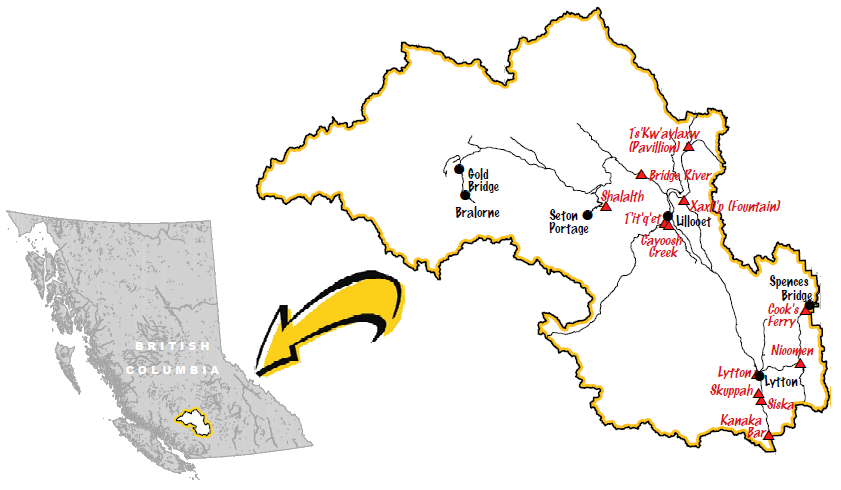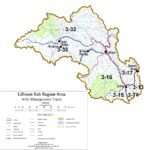THERE ARE STILL MANY REGIONS IN NEED OF A STEWARDSHIP PLAN.
STEWARDSHIP FOUNDATION IS LOOKING FOR PARTNERS THAT WOULD TAKE RESPONSIBILITY FOR THEIR ENVIRONMENT.
EVERGREEN
STEWARDSHIP PLAN
for Lillooet Sub Region
All information presented on this website comes from the Lillooet Land and Resource Management Plan, the BC Government laws, policy strategies and government founded studies.

How to participate
All individuals who are interested in the wilderness or resource management of the area are invited to be involved in the process of drafting and implementing a stewardship plan for the Lillooet Sub Region. These individuals include all stake holders, First Nations, government agency representatives, and the interested public. There will be an extensive amount of research to do to support the contents of this plan, and those who are interested in a more hands-on involvement may contribute to the field work and research.
Introduction
 Mike Morris, the parliamentary secretary to the Minister of Forests, Lands and Natural Resource Operations and also conservationist, assessed the resource use and wildlife habitat management of British Columbia in which he included oil and gas, range, agriculture, mining and forestry. This assessment was important to understand the damage that was done to wildlife due to the mountain pine beetle epidemic and the economic down turn. Mike Morris made this report to serve as advice on future actions. He identified forestry to impact wildlife and their habitats the most, in both negative and positive ways.
Mike Morris, the parliamentary secretary to the Minister of Forests, Lands and Natural Resource Operations and also conservationist, assessed the resource use and wildlife habitat management of British Columbia in which he included oil and gas, range, agriculture, mining and forestry. This assessment was important to understand the damage that was done to wildlife due to the mountain pine beetle epidemic and the economic down turn. Mike Morris made this report to serve as advice on future actions. He identified forestry to impact wildlife and their habitats the most, in both negative and positive ways.
15% of British Columbia is either a provincial park or protected area with a large diversity of ecosystems such as semi-arid desert and temperate rainforests. With its variety in fish and wildlife it only comes natural that the province is significantly dedicated to the conservation and protection of its environment.
The economy also benefits from this natural diversity including industries like agriculture, forestry, energy and mining. However, the challenge lies in finding the balance between sustainable land use and resource extraction.
Even though the industry is very progressive with their new practice called independent certification, it is still important to monitor the resource use with science, data and analysis to ensure all variables are understood including climate change and new listed species.
It is critical to also carry on with projects like the cumulative effects assessments and the Moose mortality project to ensure sustainable resource use throughout British Columbia.
In the report five strategic goals that will ensure a thriving industry and environment were listed. All values of wildlife populations and habitats should be considered before a decision on resource use is made. To guide the decision making all natural resource planning needs to brought together. This planning should include all natural resources and therefore must be done on a landscape level and the focus should lie on the improvement of the present system to make sure that it follows a sustainable direction. The most important strategy is to work together with wildlife practitioners. They understand how the natural world works in more detail than others and therefore it is critical to collaborate with them.
Source: Getting the Balance Right: Improving Wildlife Habitat in British Columbia
History
The Lillooet Land and Resource Management Plan was developed between 1995 and 2004 and was intended to be implemented until 2014 in the Lillooet Sub Region. The Sub Region is a geographical area on map that includes Lytton, Lillooet, Bridge River Valley, Seaton Lake, and the Duffy and Fraser Rivers. Unfortunately, the plan did not meet expectations during its implementation period due to non-specific objectives, vague implementation strategies, and the self-policing of industries. The government phased out the Provincial Land Use Strategy that involved public land and resource management planning in 2004 and adopted a “results-based” strategy. As a result, there has been no high level land and resource management planning since 2004. Since the implementation of the results-based, self-regulation strategy, resource use and extraction has been unsuccessful in proper stewardship of the land and resources.
Present
According to Mike Morris, the parliamentary secretary to the Ministry of Forests, Lands, and Natural Resources Operations, resource management has reached an all-time low. Morris suggests that stewards of the land take up the responsibility to draft a management plan and subsequently invite government and other party involvement. Stewards of the land include hunters, guide outfitters, trappers, First Nations, tourism operations, forestry companies and others. These groups and individuals are the best voices to draft and implement a new high level management plan because of their intimate knowledge of the land, all of its checks and balances, and the key issues currently influencing the area.
With no active overarching management planning for the last 14 years, and no initiative yet observed for a new plan, we as a guide outfitting operation in the Lillooet Sub Region are stepping up to the plate to manage wildlife habitat in this area to ensure sustainable use of all resources.
Guiding Principle
To have a measurable goal, we will determine the carrying capacity of each habitat for each species and use this value as a foundation for determining healthy population sizes within the Lillooet Sub Region for all key wildlife and plant life. Currently the Government of British Columbia has data regarding the carrying capacities of each habitat type for each major species in the province. To have species populations at carrying capacity or in balance with one another means that there is harmony within nature as well as between wilderness and human resource use.
Challenges
With the Evergreen Stewardship Plan, there may be species conflicts within habitats. For example, increasing certain predator species to carrying capacity may reduce population sizes of prey ungulate species far below carrying capacity. Another possibility is that two species occupying the same range may reach carrying capacity at different seral stages of their environment. However, due to the long term observations and experience of wilderness stewards across the Sub Region, we are confident that we can find a balance for all species that show conflict.
Structure
Management strategies of all sizes will be covered, including those at the scale of the Sub Region, Management Units (MUs), MU subzones, and smaller.
Species that were included in the plan had to first be priority species whose major habitats are found within the Sub Region. From there, the selection was narrowed down to species that are:
- A Species at Risk
- A species of historical or cultural importance
- A species of economic importance
- An invasive species
Following this general guideline, additional species will be added to the plan as it evolves.
The Plan
This plan is named the Evergreen Stewardship Plan for the Lillooet Sub Region because it is intended to be a living, open-ended, continually updated and implemented plan, with no expiry date or set review dates. It is intended to be a document that is created by a wide group of people who may continually monitor the progress and implementation of the Plan as well as add to it as new issues arise.
How to participate
All individuals who are interested in the wilderness or resource management of the area are invited to be involved in the process of drafting and implementing a stewardship plan for the Lillooet Sub Region. These individuals include all stake holders, First Nations, government agency representatives, and the interested public. There will be an extensive amount of research to do to support the contents of this plan, and those who are interested in a more hands-on involvement may contribute to the field work and research.